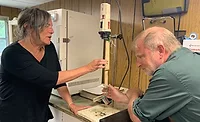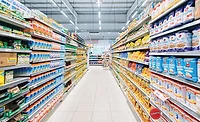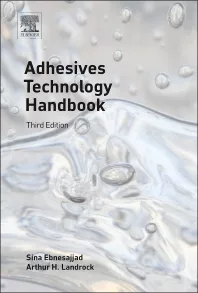Thinking Green: Sustainable Adhesive and Sealant Packaging Options
Thinking green with adhesives, sealants and other chemicals can save you green.
There are many ways to think “green” in a business environment. You can buy local, use water-based or more environmentally friendly chemicals, lower or turn off the air conditioning and lights, or use recycled products. But many green solutions have a trade-off. They might cost more, be less effective, make your process more difficult, or decrease your product’s quality. However, there are ways to think green in the workplace that will save money without sacrificing quality.
Right-Sizing
The first thing to do is look for right-sizing opportunities. Right-sizing means having an adhesive or chemical kitted or packaged into the optimal size for your application. The amount of chemicals entering your waste stream can be reduced if they are supplied to your workers in the correct kit size.
Right-sizing provides many other benefits in addition to reducing your waste stream. For one, it saves labor by keeping your workers focused on your products, rather than walking to a mix crib or spending time metering, mixing, or downloading chemicals into a secondary package. It also improves the quality of your seals and bonds by ensuring your adhesives and chemicals are always mixed on ratio, without contaminants, and in the package that is optimal for product application.
Right-sizing does come with a cost. Smaller, custom packaging is usually more expensive than buying in bulk. But the total cost of ownership to your company of that chemical or adhesive can be much lower in a right-sized package if you target the correct products to right size. When buying in bulk, you have to deal with:
• Labor costs of metering, measuring and mixing the material
• Possible loss of labor as the worker walks to the mix crib or wherever the adhesive or chemical is stored
• The possibility that the product is mixed out of ratio (human error)
• The possibility of the material becoming altered, contaminated or cured by repeated opening of bulk containers to make small batches
• The costs of any secondary packaging you are downloading the material into
• The disposal costs of all the wasted material
Finding the best right-sizing partner is important. Many companies offer packaging services, ranging from large companies with a wide range of packaging options and ISO quality systems, to small companies working out of their garages. The two most important criteria in picking your partner (if you don’t already have one you trust) are their quality system and location. Typically, if you choose a partner with an equal or higher level quality system than yours, they will deliver the product consistency you need. Location is important because high freight costs can eat up your right size savings. Buy local, but don’t sacrifice quality.
Most packagers will help you find the best right-sizing opportunities in your company. You can also do it yourself by process-mapping your adhesive and chemical applications. Start with products that are the biggest contributors to your waste stream or the processes that your workers spend the most time doing. Once you have identified the products that are good right-sizing candidates, select the package that will optimize your process, maximize your labor savings, and make your workers’ jobs as easy as possible.
Syringes and cartridges are used to dispense one-part materials, either manually or pneumatically. They can also be used for pre-mixed and frozen packages of multi-component materials. The packager will mix all the components together at the correct ratio and to your specified volume in each syringe or cartridge, then rapid-freeze the package to retard the cure rate.
Syringes can vary in size from 1-60 cc, while cartridges range in size from 1-32 oz. They can be color-coded to help differentiate materials, programs, products or equipment. They also have many needle and nozzle options, which make it easy for the worker to apply material to your product with less tooling or rework.
Dual-barrel or side-by-side cartridges are popular packages for two-component material dispensing. They have the advantage of being small and portable, and the cartridge can be used partially as the material is mixed in the static mixing nozzle during application. This means that very little material is wasted and enters your waste stream. The limitation of this type of package is that it can only be used with materials that have mix ratios of 1:1, 2:1, 4:1, or 10:1 by volume. In addition, not all adhesives, especially those with large viscosity differences in part A and part B, will mix properly in the static mixing nozzle.
The coaxial cartridge is similar to the dual-barrel cartridge, but the catalyst is in the inner tube surrounded by the base material in the outer tube, like a donut. The other difference is a valve that stops material from leaving the cartridge. This is important for materials that are compressible or subject to creating back pressure, which can result in material continuing to drip or dispense after you release the trigger of the dispensing gun. Closing the valve of the coaxial cartridge when releasing the trigger of the gun will prevent the material from continuing to flow from the static mixing nozzle, reducing the amount of wasted material.
Many other package types are available, including jars, bottles, hinge-packs, burst packs, squeeze tubes, insert kits, spray bottles, aerosol cans, solvent wipes and applicator pens. Work with your packaging partner to come up with the best solution for each of your applications. Using the right-sized package will minimize the adhesives and chemicals going into your waste stream and save you money.
Chemical Management Systems
Another place to think green and look for savings is your chemical management system. Commercially available software tracks all the chemicals in your plant from cradle to grave. It not only allows you to run all of your environmental reports, but it helps you determine your total chemical footprint—including what is in your waste stream.
It can be time-consuming to set up, since every chemical coming into your business needs to be entered with great detail that often goes beyond the information provided on the TDS and MSDS. Once it is set up, however, you will have access to many reports and data that will give a clear picture of what your business is using and wasting.
If your company is large enough, you could benefit from outsourcing your chemical management program. The benefits of using a chemical management company include:
• Having your chemical management software populated and maintained
• Environmental reporting, MSDS management and usage data
• Leveraging purchasing power and consolidating your suppliers
• Inventory, label and bar code, shelf life management, and point-of-use stocking
• Labor savings and increased efficiency
• Cost-saving initiatives; these companies are trained to find right-sizing opportunities and other cost-saving process improvements focused on labor savings and minimizing your waste stream
Innovative Solutions
The last area to look at for green savings is innovation. New products are always being released. One recent commercialized product is literally green—a glow-in-the-dark spatula was created for tooling sealant inside the wings and fuel tanks of aircraft. Objects left behind in wings or fuel tanks can create foreign object damage (FOD) or can result in fines from the FAA. With these spatulas and other tools that glow green in the dark, the risk of FOD and FAA fines is minimized. Communicate your needs to your packaging supplier; it could result in a custom solution or a new product.
Save Green by Thinking Green
Thinking green does not have to cost more money or reduce the quality of your products. You can think green by increasing your efficiency and reducing the chemicals in your waste stream by right-sizing your adhesives, sealants, and other chemicals. Chemical management software or outsourcing your chemical management program can also help reduce labor, increase efficiency and reduce chemicals in your waste stream. Choosing the correct packaging partner can help you target the products to right-size and achieve the savings you seek. Save some green by thinking green.
For additional information, contact the author at jim.enochs@ppg.com or visit www.semcopackaging.com.
Looking for a reprint of this article?
From high-res PDFs to custom plaques, order your copy today!






